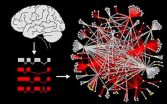(Press-News.org) A decades-long debate over how nitrogen is removed from the ocean may now be settled by new findings from researchers at Princeton University and their collaborators at the University of Washington.
The debate centers on how nitrogen — one of the most important food sources for ocean life and a controller of atmospheric carbon dioxide — becomes converted to a form that can exit the ocean and return to the atmosphere where it is reused in the global nitrogen cycle.
Researchers have argued over which of two nitrogen-removal mechanisms, denitrification and anammox, is most important in the oceans. The question is not just a scientific curiosity, but has real world applications because one mechanism contributes more greenhouse gases to the atmosphere than the other.
"Nitrogen controls much of the productivity of the ocean," said Andrew Babbin, first author of the study and a graduate student who works with Bess Ward, Princeton's William J. Sinclair Professor of Geosciences. "Understanding nitrogen cycling is crucial to understanding the productivity of the oceans as well as the global climate," he said.
In the new study, the researchers found that both of these nitrogen "exit strategies" are at work in the oceans, with denitrification mopping up about 70 percent of the nitrogen and anammox disposing of the rest.
The researchers also found that this 70-30 ratio could shift in response to changes in the quantity and quality of the nitrogen in need of removal. The study was published online this week in the journal Science.
The two other members of the research team were Richard Keil and Allan Devol, both professors at University of Washington's School of Oceanography.
Essential for the Earth's life and climate, nitrogen is an element that cycles between soils and the atmosphere and between the atmosphere and the ocean. Bacteria near the surface help shuttle nitrogen into the ocean food chain by converting or "fixing" atmospheric nitrogen into forms that phytoplankton can use.
Without this fixed nitrogen, phytoplankton could not absorb carbon dioxide from the air, a feat which is helping to check today's rising carbon dioxide levels in the atmosphere. When these tiny marine algae die or are consumed by predators, their biomass sinks to the ocean interior where it becomes food for other types of bacteria.
Until about 20 years ago, most scientists thought that denitrification, carried out by some of these bacteria, was the primary way that fixed nitrogen was recycled back to nitrogen gas. The second process, known as anaerobic ammonia oxidation, or anammox, was discovered by Dutch researchers studying how nitrogen is removed in sewage treatment plants.
Both processes occur in regions of the ocean that are naturally low in oxygen, or anoxic, due to local lack of water circulation and intense phytoplankton productivity overlying these regions. Within the world's ocean, such regions occur only in the Arabian Sea, and off the coasts of Peru and Mexico.
In these anoxic environments, anaerobic bacteria feast on the decaying phytoplankton, and in the process cause the denitrification of nitrate into nitrogen gas, which cannot be used as a nutrient by most phytoplankton. During this process, ammonium is also produced, although marine geochemists had never been able to detect the ammonium that they knew must be there.
That riddle was solved in the early 2000s by the discovery of the anammox reaction in the marine environment, in which anaerobic bacteria feed on ammonium and convert it to nitrogen gas.
But another riddle soon appeared: the anammox rates that Dutch and German teams of researchers measured in the oceans appeared to account for the entire nitrogen loss, leaving no role for denitrification.
Then in 2009, Ward's team published a study in the journal Nature showing that denitrification was still a major actor in returning nitrogen to the air, at least in the Arabian Sea. The paper further fueled the controversy.
Back at Princeton, Ward suspected that both processes were necessary, with denitrification churning out the ammonium that anammox then converted to nitrogen gas.
To settle the issue, Ward and Babbin decided to look at exactly what was going on in anoxic ocean water when bacteria were given nitrogen and other nutrients to chew on.
They collected water samples from an anoxic region in the ocean south of Baja California and brought test tubes of the water into an on-ship laboratory. Working inside a sturdy, flexible "glove bag" to keep air from contaminating the low-oxygen water, Babbin added specific amounts and types of nitrogen and organic compounds to each test tube, and then noted whether denitrification or anammox occurred.
"We conducted a suite of experiments in which we added different types of organic matter, with variable ammonium content, to see if the ratio between denitrification and anammox would change," said Babbin. "We found that not only did increased ammonia favor anammox as predicted, but that the precise proportions of nitrogen loss matched exactly as predicted based on the ammonium content."
The explanation of why, in past experiments, some researchers found mostly denitrification while others found only anammox comes down to a sort-of "bloom and bust" cycle of phytoplankton life, explained Ward.
"If you have a big plankton bloom, then when those organisms die, a large amount of organic matter will sink and be degraded," she said, "but we scientists are not always there to measure this. In other words, if you aren't there on the day lunch is delivered, you won't measure these processes."
The researchers also linked the rates of nitrogen loss with the supply of organic material that drives the rates: more organic material equates to more nitrogen loss, so the quantity of the material matters too, Babbin said.
The two pathways have distinct metabolisms that turn out to be important in global climate change, he said. "Denitrification produces carbon dioxide and both produces and consumes nitrous oxide, which is another major greenhouse gas and an ozone depletion agent," he said. "Anammox, however, consumes carbon dioxide and has no known nitrous oxide byproduct. The balance between the two therefore has a significant impact on the production and consumption of greenhouse gases in the ocean."
INFORMATION: END
Study resolves controversy over nitrogen's ocean 'exit strategies'
2014-04-11
ELSE PRESS RELEASES FROM THIS DATE:
Forging iron women
2014-04-11
Published in the Journal of Nutrition, researchers undertook a systematic review and analysis of the effect of iron supplementation to the exercise performance of women aged from .
Lead researcher, Dr Sant-Rayn Pasricha from the Melbourne School of Population and Global Health found that iron supplementation improved women's exercise performance, in terms of both the highest level they could achieve at 100% exertion (maximal capacity) and their exercise efficiency at a submaximal exertion. Women who were given iron were able to perform a given exercise using a lower ...
Eye of the beholder -- improving the human-robot connection
2014-04-11
Researchers are programming robots to communicate with people using human-like body language and cues, an important step toward bringing robots into homes.
Researchers at the University of British Columbia enlisted the help of a human-friendly robot named Charlie to study the simple task of handing an object to a person. Past research has shown that people have difficulty figuring out when to reach out and take an object from a robot because robots fail to provide appropriate nonverbal cues.
"We hand things to other people multiple times a day and we do it seamlessly," ...
Greenland ice cores show industrial record of acid rain, success of US Clean Air Act
2014-04-11
The rise and fall of acid rain is a global experiment whose results are preserved in the geologic record.
By analyzing samples from the Greenland ice sheet, University of Washington atmospheric scientists found clear evidence of the U.S. Clean Air Act. They also discovered a link between air acidity and how nitrogen is preserved in layers of snow, according to a paper published this week in the Proceedings of the National Academy of Sciences.
Forty-five years ago, acid rain was killing fish and dissolving stone monuments on the East Coast. Air pollution rose beginning ...
Researchers develop ErSb nanostructures with applications in infrared and terahertz ranges
2014-04-11
In a feat that may provide a promising array of applications, from energy efficiency to telecommunications to enhanced imaging, researchers at UC Santa Barbara have created a compound semiconductor of nearly perfect quality with embedded nanostructures containing ordered lines of atoms that can manipulate light energy in the mid-infrared range. More efficient solar cells, less risky and higher resolution biological imaging, and the ability to transmit massive amounts of data at higher speeds are only a few applications that this unique semiconductor will be able to support.
"This ...
The taming of the shrew
2014-04-11
The Borna disease – named after the German city of Borna, which saw a cluster of cases over 100 years ago – mainly affects horses and sheep, and in rare cases cattle and rabbits too. A single case of an infected dog has been reported. Affected horses seclude themselves from the herd and suffer from depression and general disorientation. Ultimately, this incurable infection is fatal.
Borna virus detected in bicoloured shrews
Researchers have long been in the dark concerning the transmission mechanism of the Borna virus. The bicoloured shrew was one suspect, but definitive ...
Nobel prize candidates wait often over 20 years to win their prize
2014-04-11
Candidates for a Nobel prize often have to wait more than 20 years to receive this highest of scientific accolades. According to a Correspondence by Santo Fortunato of Aalto University in Finland and colleagues, such nail-biting delays are becoming the norm — to the point that aspiring laureates may themselves have expired by the time the medal is due to be presented.
Before 1940, Nobel prizes were awarded more than 20 years after the original discovery for only about 11%, 15% and 24% of physics, chemistry and physiology or medicine prizes, respectively. But by 1985, ...
The ATM strikes back
2014-04-11
Its head and pronotum are usually rusty red, and its abdomen blue or shiny green: the bombardier beetle is approximately one centimetre long and common to Central Europe. At first glance, it appears harmless, but it possesses what is surely the most aggressive chemical defence system in nature. When threatened, the bombardier beetle releases a caustic spray, accompanied by a popping sound. This spray can kill ants or scare off frogs. The beetle produces the explosive agent itself when needed. Two separately stored chemicals are mixed in a reaction chamber in the beetle's ...
Splice variants reveal connections among autism genes
2014-04-11
A team of researchers from the University of California, San Diego School of Medicine and the Center for Cancer Systems Biology (CCSB) at the Dana-Farber Cancer Institute has uncovered a new aspect of autism, revealing that proteins involved in autism interact with many more partners than previously known. These interactions had not been detected earlier because they involve alternatively spliced forms of autism genes found in the brain.
In their study, published in the April 11, 2014 online issue of Nature Communications, the scientists isolated hundreds of new variants ...
Young athletes from higher income families more likely to suffer serious overuse injuries
2014-04-11
MAYWOOD, Il. (April 11, 2014) – A Loyola University Medical Center study is reporting for the first time a link between overuse injury rates in young athletes and their socioeconomic status.
The rate of serious overuse injuries in athletes who come from families that can afford private insurance is 68 percent higher than the rate in lower-income athletes who are on public insurance (Medicaid), the study found.
The study also found that privately insured young athletes are twice as likely as publicly insured athletes to be highly specialized in one sport. Loyola researchers ...
South Carolina House passes amendment to Emma's Law
2014-04-11
South Carolina House passes amendment to Emma's Law
Article provided by Blake Law Firm, PA
Visit us at http://www.blakelawfirm.com
Like many states, drunk driving is a serious problem in South Carolina. As a result, the legislature has enacted strict penalties for offenders. However, those penalties are about to get much more strict, according to the most recent news from the South Carolina Legislature.
Recently, the South Carolina House voted 112-0 to pass an amendment to Emma's Law. This law is not yet final and must pass the Senate and be signed by the Governor.
Emma's ...




